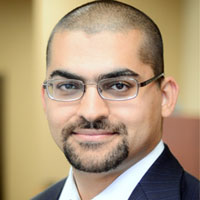Hair Transplants Should Match Ethnicity of Patient
Several men suffer from hair loss problems and it strikes anyone irrespective of race, age, gender or region. Hair transplants have come as a near optimum solution to retrieve the hair line and get a natural look. The process involves transplanting hair from the back of the head which is genetically immune to hair loss to the bald areas.
The process may be replicated on all clients but care should be taken to consider the ethnicity of the person before starting the restoration procedure says Dr. Samuel Lam, a board-certified hair restoration surgeon. He highlights the importance of using different techniques based on ethnic hair qualities which varies in thickness of hair, texture, hairline shape, growth pattern on scalp, density and so on.
Dr. Lam specializes in creating hairlines and density patterns that retains natural look besides matching the ethnicity of the individual undergoing the procedure. In his Willow Bend Wellness Center in Dallas, Dr. Lam provides help to clients with hair restoration needs with optimum care. Dr. Lam has even given guidelines based on some ethnicities.
Hair transplants for Asians is considered difficult owing to unique features of the hair shaft and color contrast and shape of hairline which is rounder. The thick straight hair, differences in density and skin color must be considered and the hair transplant should be at low angles to give a natural look.
For people of Hispanic origin due care is required in designing a hair transplant procedure as the population includes different types of individuals of Spanish descent. This makes it difficult to categorize based on the specific ethnic mix. The hair restoration surgeon has to design the procedure based on client’s facial shape and extent of hair loss also, revealed Dr.Lam.
Both men and women belonging to the African community suffer from hair loss. Knowledge of the physiology of the African hair shaft is imperative before starting the procedure on a patient. The process should focus on precise harvesting of curly black hair and transplanting in a way that matches the exit angles of the scalp. The hairline should also match the ethnic characteristics like straighter, less curved shape in men compared to other races.
In case of people of Middle Eastern origin hair caliber is thick, coarse and mostly dark. The Middle East region covers Iran, Lebanon, Turkey, Israel and many other countries but the physical characteristics of the hair is similar which should be considered by the hair restoration surgeon.
As the hair qualities differ with respect to texture, thickness, hairlines etc. depending on different ethnicities, the harvesting and placement techniques need to be altered to give a complete natural look. Sensitivity to the culture and a thorough knowledge of the anatomy and physiology of
different hair shafts will help a surgeon create a natural hairline and help the patient realize a natural crop of hair which will help him regain confidence and self-esteem.
Hairfear
Frequently asked questions about hair transplant procedures
How much does a hair transplant cost?
Hair transplants can vary in price based off of the area in the world that you are interested in getting a hair transplant as well as the size of the area where you may need a hair transplant. Experienced doctors in the United States will often charge some of the highest prices for a hair transplant worldwide and this is why so many travelers make the move to other parts the world like Turkey, India, Thailand, Mexico...etc for their hair transplants.
Will a hair transplant hurt?
Although hair transplants may look like a particularly
unpleasant or painful experience is actually very little discomfort involved
with the surgery itself. Hair transplants are always done under an anesthetic so there's absolutely zero pain during the treatment itself. Many people actually relate the process as being very similar to going to the dentist for filling or root canal. Mild pain can persist over the course of postop treatment but he generally just resumes for a few days.
Who can deliver the best surgery?
It's usually best to consider working with surgeons who have and IAHRS certification or international alliance of hair restoration surgeons recognition. IAHRS can often deliver recommendations for the best surgeons in each particular area.
Is this scarring noticeable?
Any type of hair transplant will require the use of incisions throughout the scalp. There can also sometimes be a small scar from the donor area towards the back of the scalp. Asking to look at photos of the surgeon's previous work will help you to see roughly how bad the scarring could be. In most cases an experienced professional can limit the look of scarring and noticeable marks from the surgery.
How long does it take for the hair to grow?
In most cases hair growth will start within eight months and you can start to see a full effect from the hair transplant after a full year. The initial signs of growth can usually start between 3 to 4 months after the surgery.
Are the results permanent?
The hair follicles that are transplanted are generally the ones which are genetically resistant against the symptoms of baldness. As long as you receive hair loss treatment later in your life after the symptoms of balding have started to subside, you can have a better chance at permanent results.
While everyone know you've had surgery?
If you want to limit the chance that people may find out about your surgery it's important to give at least three weeks of healing as the surgical area will be affected and red just after surgery. After around a month of healing it can look far less noticeable. You could consider wearing a hat while time passes or opting for some extra time off if possible.
How long should I rest after surgery?
It's recommended to rest for at least a few days after surgery so that your body can recover. Trenton to over exert yourself and limit sexual activity, running in the gym for around 10 days after surgery.
Is it possible to lose more hair as a result of surgery?
There is always a chance of shock loss which happens when the hair is weak and miniaturizing after the surgery. As long as the surgeon is choosing the correct hair follicles and performing the surgery well it's possible to minimize the chance of this happening however.
Will I need another hair transplant?
The need for another transplant really depends on the individual. With a solid foundation surgery and working to potentially bolster results with drug therapy, you can improve the stability of the hair that was transplanted as well as prevent further loss. Getting a hair transplant early
on in your 20s or early on in life could lead to needing long-term transplants as hair loss can be progressive.








